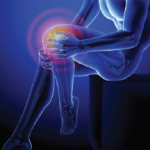The exercise group not only had a better GAG content, but those subjects reported gains in physical activity and functional performance. “The changes imply that human cartilage responds to physiologic loading in a way similar to that exhibited by muscle and bone,” Dr. Dahlberg notes in the article. Moreover, improvements in symptoms of the patients with OA who exercised “may occur in parallel or even be caused by improved cartilage properties.”
Dr. Roos and colleagues published a study in BMC Musculoskeletal Disorders showing the effect of exercise on knee stiffness after an ACL injury (which, as noted above, is often accompanied by OA).3 She studied 12 men who had been soccer players and had sustained an ACL injury 16 years earlier. Twelve weeks of knee-specific neuromuscular training—including balance, rubber band resistance, hopping, and lifting exercises—reduced knee stiffness in these subjects. Moreover, they reported better function in recreational sports.
Practicing rheumatologists should keep in mind, however, that knee OA patients may resist exercise recommendations. In early 2006, Dr. Roos interviewed 16 middle-aged patients to find out their conceptions of exercise as an effective form of treatment for knee OA. She found that although patients with knee OA and pain are aware of the health benefits of exercise, many have doubts and concerns. One of the most common questions patients have asked her over the years, Dr. Roos mentioned in her presentation, is, “Will I wear the joint down if I exercise?” If exercising properly, the answer is definitively no, she says—and it’s up to the rheumatology healthcare team to get that message across.
Virginia Hughes is a medical writer based in New York City.
References
- Englund M, Niu J, Guermazi A, et al. Effect of meniscal damage on the development of frequent knee pain, aching, or stiffness. Arthritis Rheum. 2007; 56:4048–4054.
- Roos EM, Dahlberg L. Positive effects of moderate exercise on glycosaminoglycan content in knee cartilage: A four-month, randomized, controlled trial in patients at risk of osteoarthritis. Arthritis Rheum. 2005; 52:3507–3514.
- von Porat A, Henriksson M, Holmström E, Roos EM. Knee kinematics and kinetics in former soccer players with a 16-year-old ACL injury—the effects of twelve weeks of knee-specific training. BMC Musculoskelet Disord. 2007;8:35.


